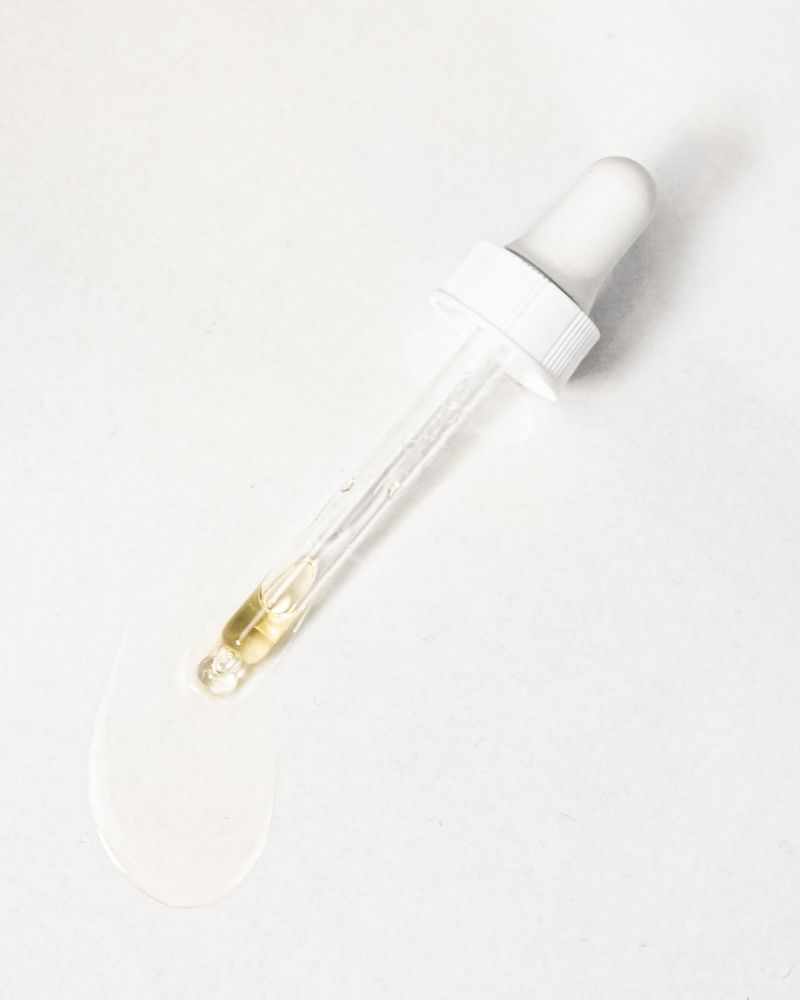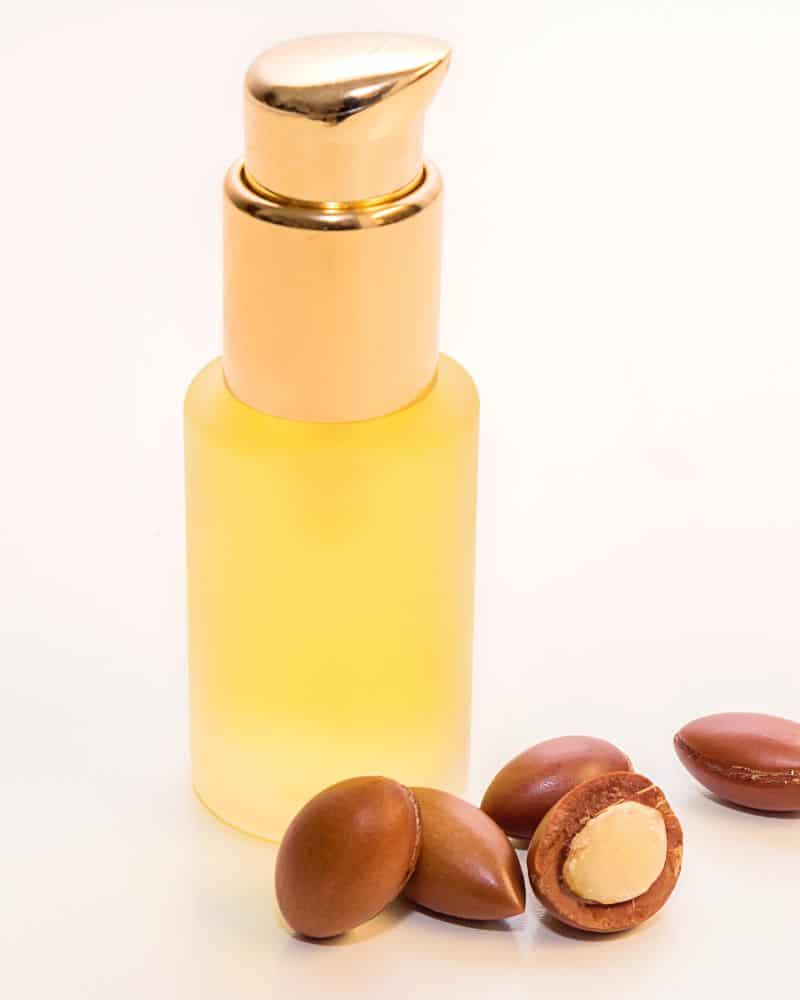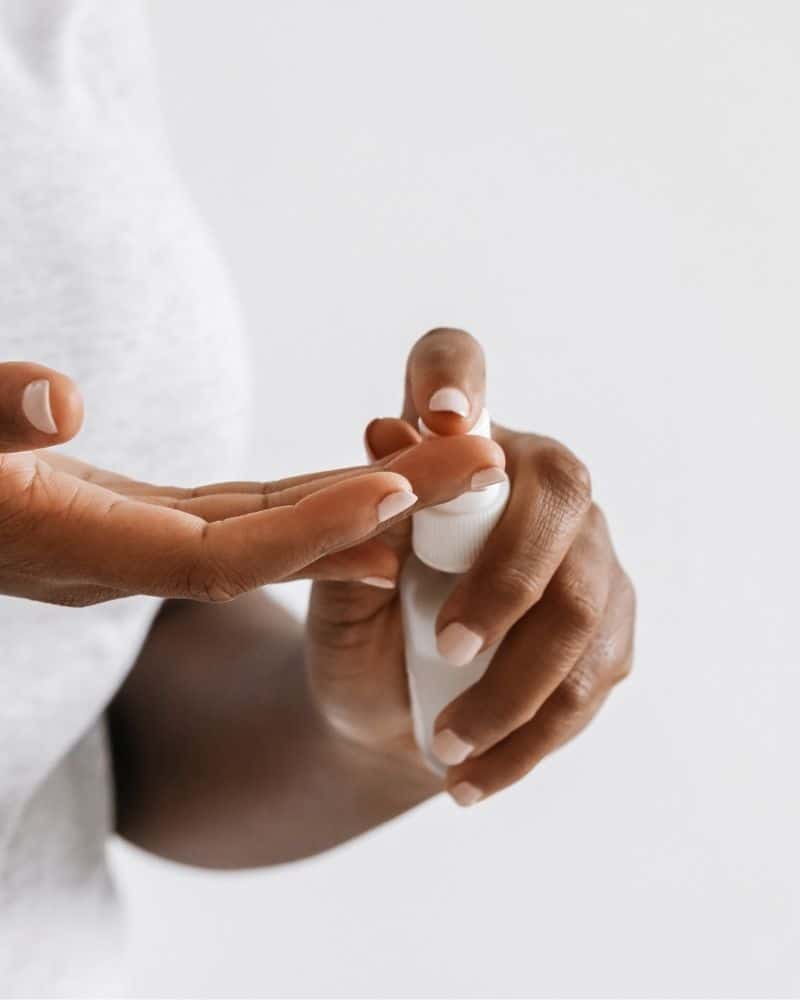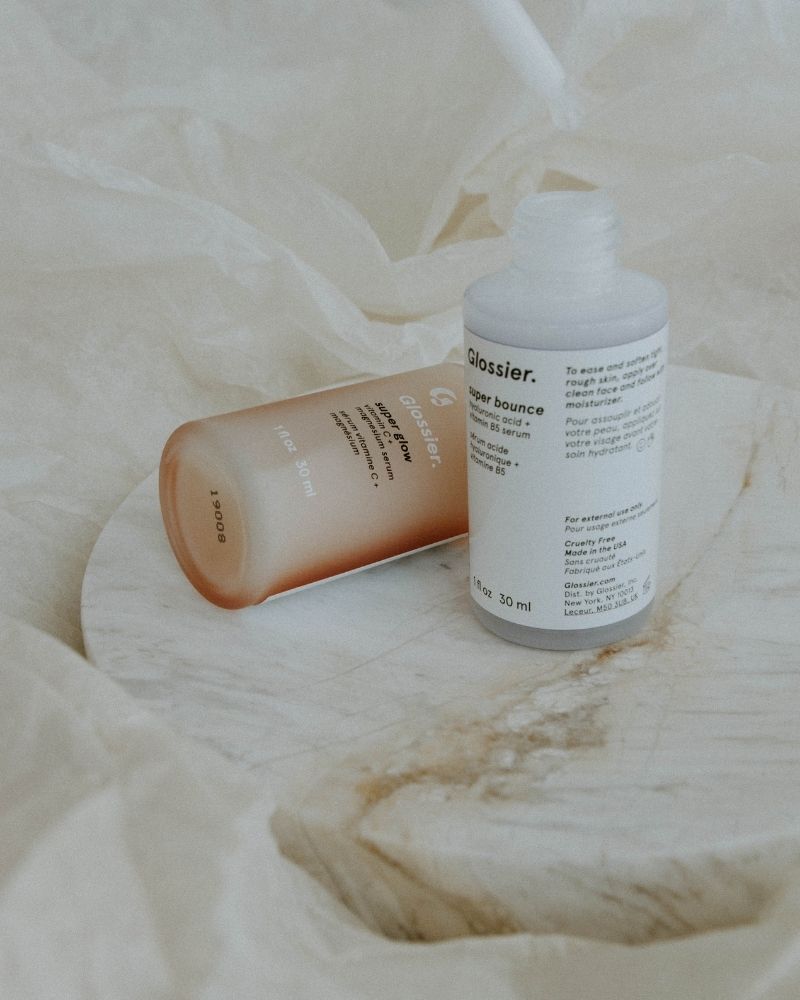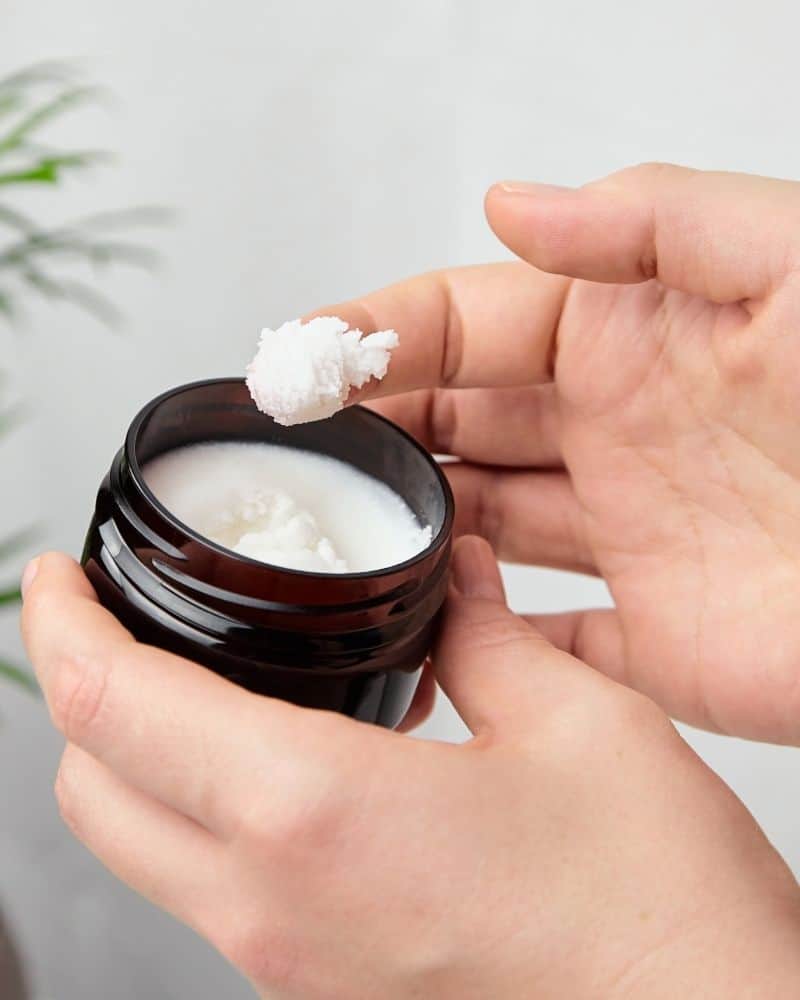Does Cocoa Butter Clog Pores?
This post may contain affiliate links.
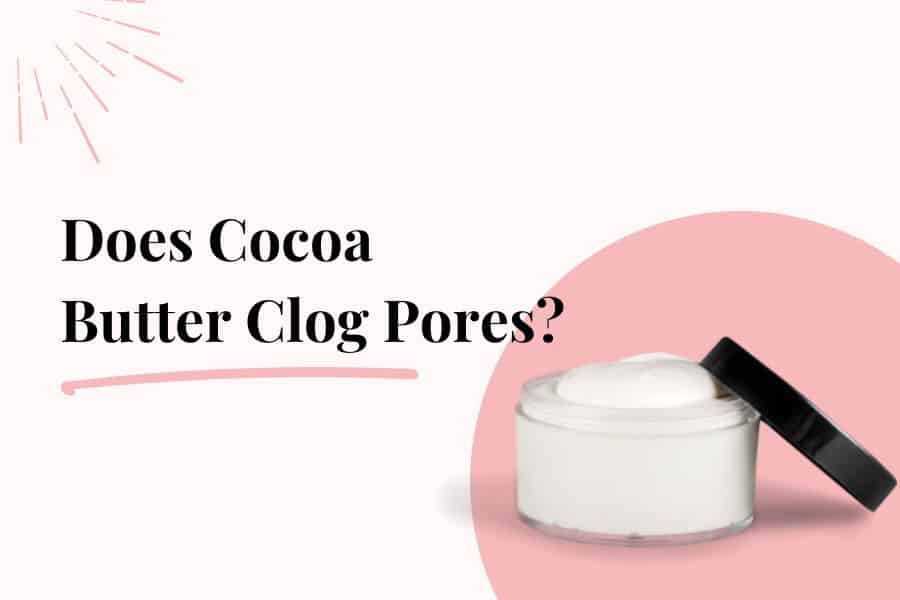
Cocoa butter is a popular ingredient in body lotions, creams and even lip balms. It is said to be beneficial for the skin because it is rich in antioxidants and contains fatty acids that help to hydrate, nourish and protect the skin. But before you slather on the cocoa butter, you might be wondering does cocoa butter clog pores or cause acne? We’ll take a look at the comedogenicity rating of cocoa butter and look in depth into the composition profile to determine if cocoa butter can clog pores.
What Is Cocoa Butter?
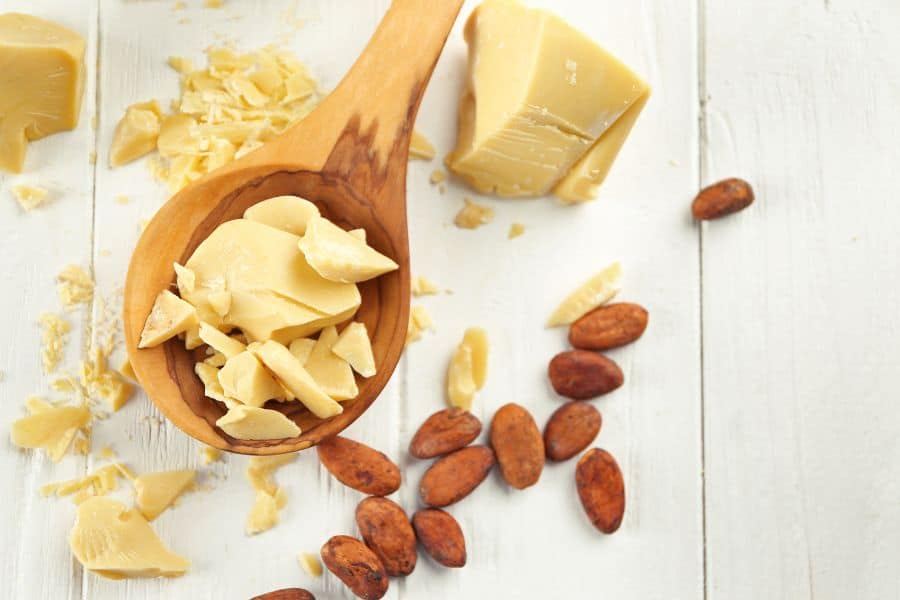
Cocoa Butter is a natural substance derived from cocoa beans. These beans grow on the cacao tree and are used for everyday products like chocolate and products for specific skin conditions.
The Cacao plant is simply the raw version, while Cocoa is the processed stuff that goes in our food and products.
Cocoa butter is a fat that is derived from the cocoa bean. It is solid at room temperature but melts when it comes into contact with the skin. Cocoa butter is often used in cosmetics and as a base for making chocolate.Benefits of Cocoa ButterCocoa butter has a number of benefits when used on the skin. Cocoa Butter is an excellent moisturizer that forms a protective barrier on the skin, making it perfect for dry skin.
Benefits Of Cocoa Butter For The Skin
- Moisturizing: cocoa butter is high in fatty acids, which help to keep skin hydrated and moisturized while keeping the skin barrier strong and healthy. Fatty acids can also help promote wound healing and reduce inflammation
- Nourishing: cocoa butter is rich in Vitamin E which is an antioxidant that helps protect the skin from damage caused by free radicals. It can help to nourish skin, reduce redness, inflammation and
- Anti-inflammatory: the fatty acids present in cocoa butter can help to soothe and calm irritated skin and help to reduce irritation and inflammatory skin conditions like eczema or psoriasis
- Anti-aging: thanks to the high concentration of polyphenols, cocoa butter has been shown to help with signs of aging like elasticity
- Antioxidant: as mentioned, cocoa butter is rich in antioxidants like vitamin e. Antioxidants help to protect the skin from damage caused by free radicals and UV rays, which can lead to wrinkles and fine lines and skin damage
Cocoa butter is very popular in skincare products, especially body butter and lotions, because it is so effective at moisturizing and nourishing the skin. It is also often used to help heal scars and reduce stretch marks.
When applied to the skin, cocoa butter helps deeply hydrate the skin. This is due to the fact that it is essentially a medley of stearic, palmitic, and oleic acids. These fatty acids are also proven to promote a strong skin barrier, nourish and moisturize the skin, and help with wound healing and reducing inflammation.
As such, cocoa butter is a treat for dry skin, including your body and lips. Anyone looking for a solution for rough, dry patches on their skin is likely to find that cocoa butter smooths, nourishes and reduces those pesky rough patches quickly.
The Comedogenicity Scale
Before we go any futher, we need to take a look at the comedogenicity scale. This is a measure of how likely an ingredient is to clog pores.
The scale goes from 0 – 5, with 0 being non-comedogenic (meaning it won’t clog pores) and 5 meaning it is highly likely to clog pores.
The comedogenic scale simply measures how likely a product or ingredient will clog pores. Here is the comedogenicity scale:
The comedogenic scale ranges from 0-5.
0- Does not clog pores
1- Low chance of clogging pores
2- Moderately low chance of clogging pores
3- Moderate chance of clogging pores
4- Fairly high chance of clogging pores
5- High chance of clogging pores
In general, anything that’s rated 0-2 should be fine to use and shouldn’t cause any major issues. The big thing for acne-prone skin is to be cautious with anything rated a 4 or 5.
However, it’s important to note that just because a product has a low comedogenicity rating, does not mean it won’t clog pores or cause breakouts. And vice versa, just because a product or ingredient has a high comedogenicity rating, does not mean it will clog pores or lead to acne.
Ingredients with a high comedogenicity rating are more likely to cause these problems, while those with a low comedogenicity rating are less likely to do so.
Related post: Does Almond Oil Clog Pores?
Does Cocoa Butter Clog Pores?
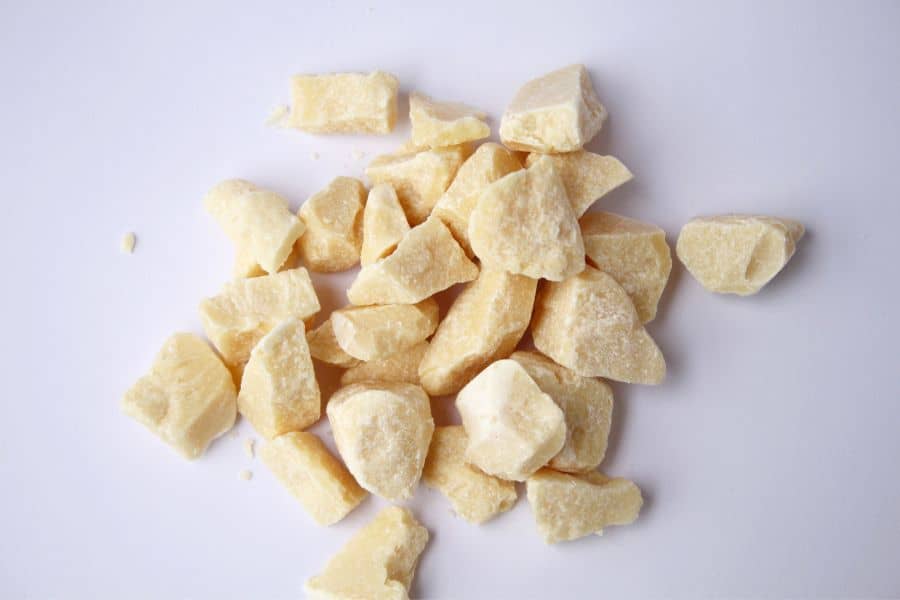
Although cocoa butter is an incredibly nourishing ingredients that has a host of benefits for the skin, it is unfortunately considered comedogenic. It’s highly likely to clog pores and lead to acne or breakouts.
What Is The Comedogencity Rating of Cocoa Butter?
Cocoa butter has a comdedogencity rate of four, meaning that it is highly comedogenic. It can be compared to coconut oil in this regard.
This means that is does have the potential to clog pores and lead to acne. However, as we mentioned before, just because an ingredient is comedogenic does not mean it will definitely cause these problems.
It’s important to remember that everyone’s skin is different. What may cause one person to breakout may not have any effect on another person. So, if you’re curious about whether or not cocoa butter will cause breakouts for you, the best way to find out is to test it out on a small area of skin first.
Cocoa Butter Fatty Acid Profile
Cocoa butter is made up of a variety of different fatty acids like oleic and stearic acids, plus many more. A look into the fatty acid profile of cocoa butter can give us a better idea of what it does for the skin and why it is considered comedogenic.
Here is the fatty acid profile of cocoa butter:
Palimitic acid – 24.5-33.7%
Stearic acid – 33.7-40.2%
Oleic acid – 26.3-35%
Linoleic acid – 1.7-3%
In general, linoleic acid is better for oily and acne-prone skin types and can actually help treat acne. This is because oily and acne-prone skin generally have lower levels in linoleic acid in the skin, so supplementing the fatty acid with oils and butters can be beneficial. Oleic acid is best used for drier skin and can lead to clogged pores and acne.
As you can see, oleic, palimitic and stearic acids make up the majority of the fatty acid profile of cocoa butter. Unfortunately, the beneficial linoleic acid has a low presence in cocoa butter. This is likely one of the reasons why it is considered comedogenic.
Oleic acid has not only been shown to clog pores, but it’s also been shown that oleic acid promotes the growth of acne-causing bacteria on the skin. As for palimitic acid, it’s thought to be involved in the inflammatory process of acne.
So, does this mean that you should avoid cocoa butter if you have acne-prone or oily skin? Not necessarily. Everyone’s skin is different and what may cause one person to breakout may not have any effect on another person. However, it does give you an idea of why cocoa butter is considered comedogenic and why it may not be the best choice for those with acne-prone skin.
Does Cocoa Butter Cause Acne?
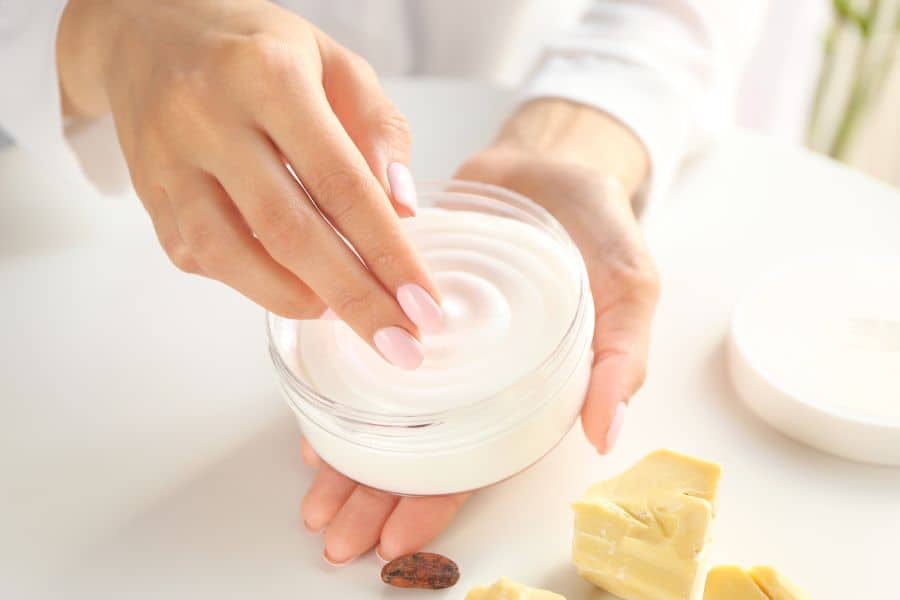
Cocoa butter makes an amazing moisturizer that helps to nourish and protect the delicate skin barrier, but does cocoa butter make you break out?
Unfortunately, cocoa butter does have the potential to cause acne. This is because it is considered comedogenic and is rated a 4/5 on the comedogenicity scale. Additionally, cocoa butter is high in Oleic and Palimitic fatty acids, which have been shown to play a role in the development of acne.
While cocoa butter does have the potential to cause acne, it’s important to remember that everyone’s skin is different. Just because cocoa butter may cause breakouts for one person does not mean it will have the same effect on another person.
Does Cocoa Butter Clog Pores FAQ’s
Is cocoa butter good for pores?
Cocoa butter is not good for pores. In fact, it’s considered comedogenic and is rated a 4/5 on the comedogenicity scale. This means that cocoa butter is highly likely to clog pores and lead to acne or breakouts. Plus, when pores are clogged, they look bigger, so there’s a chance cocoa butter could cause pores to look more noticeable.
Is it good to put cocoa butter on your face?
While cocoa butter has a ton of amazing nutrients and benefits for the skin, it’s not the best ingredient to use on your face. This is because it is considered comedogenic and is rated a 4/5 on the comedogenicity scale. Of course, cocoa butter may not cause any skin issues for you, but it’s always best to test it out on a small area of skin first.
Is cocoa butter good for pimples?
Cocoa butter is not good for pimples. In fact, it’s considered comedogenic and is rated a 4/5 on the comedogenicity scale. Additionally, cocoa butter is high in Oleic acid, which has been shown to promote the growth of acne-causing bacteria on the skin. It’s also high in Palimitic acid which is thought to promote inflammation associated with acne.
Does cocoa butter lotion clog pores?
Many popular skincare brands like Vaseline and Palmers offer cocoa butter lotions and creams. Do these clog pores too? Unfortunately, since they contain cocoa butter, they are also likely to clog pores and cause acne or breakouts. Many of these lotions and butters have other comedogenic ingredients like coconut oil and stearic acid. While they’re great choices for the skin on your body, it’s best to avoid using them on your face.
Non-Comedogenic Cocoa Butter Alternatives
If you’re looking for a non-comedogenic alternative to cocoa butter, there are plenty of options available. Some good alternatives include:
- Argan oil – rated 0 on the comedogenicity scale
- Grapeseed oil – rated 1 on the comedogenicity scale
- Passionfruit seed oil (Maracuja oil) – rated 1 on the comedogenicity scale
- Safflower oil – rated 0 on the comedogenicity scale
- Shea butter – rated 0 on the comedogenicity scale
- Rosehip seed oil – rated 1 on the comedogenicity scale
If you’re wanting a non-comedogenic butter to use on the skin, shea butter is a great option. It’s packed with nutrients, vitamins and minerals to nourish the skin, moisturize and protect the skin’s barrier. Shea butter is non-comedogenic as well!
Is Cocoa Butter Comedogenic? Wrap Up
Although cocoa butter has a lot of benefits, it does have the potential to clog pores. It’s rated a 4/5 on the comedogenicity scale, which means it’s highly likely to cause acne or breakouts. If you have acne-prone skin, it’s best to avoid using cocoa butter on your face or opt for a non-comedogenic alternative instead (like shea butter). If you have drier skin, cocoa butter may be a great option for you, but it’s best to test it out on a small area of skin first to see how your skin reacts.
Related To Does Cocoa Butter Clog Pores
- Does Argan Oil Clog Pores?
- Is Castor Oil Comedogenic?
- Is Olive Oil Comedogenic?
- Does Jojoba Oil Clog Pores?
